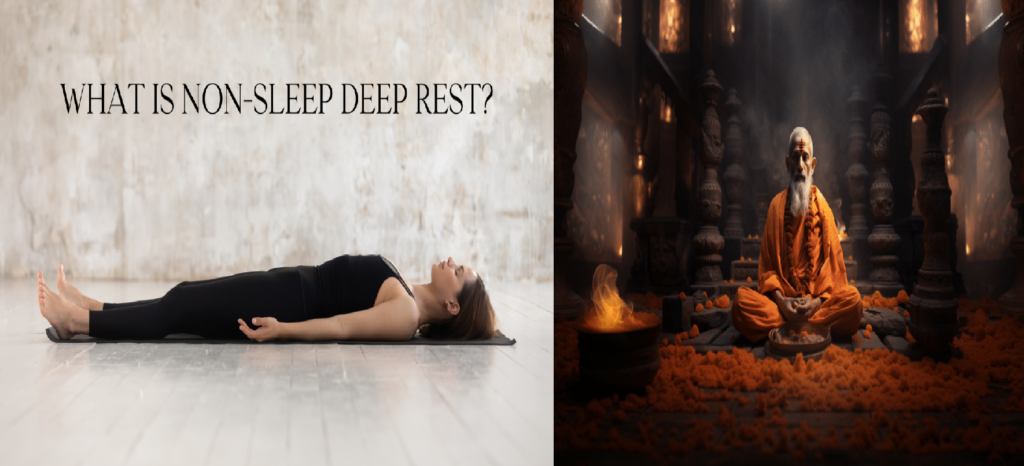The Power of Non-Sleep Deep Rest (NSDR)
The Power of Non-Sleep Deep Rest (NSDR)
The Power of Non-Sleep Deep Rest (NSDR): Explore the benefits of Non-Sleep Deep Rest (NSDR) for replenishing dopamine levels, reducing stress, and improving cognitive performance. Learn how this practice can help restore your mental and physical energy.
I want to shift gears for a minute and talk about something that has been on my mind. I didn’t get good sleep for a couple of nights in a row, and with deadlines and work piling up, I was feeling very unmotivated.
As you like to say, I was deep in some of your content and came across the concept of Non-Sleep Deep Rest (NSDR). I had never heard of it before, although I’m sure it has become popular since you’ve talked about it.
I would love for you to discuss NSDR and its benefits, especially since sleep is crucial for replenishing dopamine. Without proper sleep, I didn’t get that dopamine replenishment. Some tools that people can use, again focusing on behavioral tools, include NSDR. This concept is fascinating to me, especially in how it can help replenish baseline dopamine levels.
The Power of Non-Sleep Deep Rest (NSDR): Understanding Yoga Nidra
I first learned about something called Yoga Nidra, which means “yoga sleep.” This thousand-year-old protocol involves lying down and trying to stay awake while remaining completely still. It includes long exhale breathing, which slows the heart rate through respiratory sinus arrhythmia.
This practice has long been used to offset sleep loss and create states of replenished mental and physical vigor, even if you’ve slept well. There are theories and interesting writings about Yoga Nidra potentially allowing people to tap into intentions and other mental states.
The Power of Non-Sleep Deep Rest (NSDR): From Animal Studies to Human Studies
Around 2015-2016, I decided to shift a significant portion of my lab from animal studies to human studies, focusing on stress mitigation and trauma. I visited a trauma treatment center in Florida where they practiced Yoga Nidra every morning for an hour.
I participated a couple of times and found it incredibly restorative, especially since I wasn’t sleeping well on that trip. After an hour of Yoga Nidra, I felt as if I had slept for eight hours, even though I had only slept for four or five broken hours.
The Power of Non-Sleep Deep Rest (NSDR): The Birth of NSDR
Back in my laboratory, we were studying stress mitigation techniques. I decided to create a concept called Non-Sleep Deep Rest (NSDR) to give people a clear understanding of what they were doing, stripping away any mysticism. NSDR involves lying down for 10 to 30 minutes (or even an hour), doing long exhale breathing to slow the heart rate, and performing a body scan.
The goal is to stay awake, but it’s okay if you fall asleep. We observed dramatic decreases in sympathetic autonomic arousal, placing the brain and body into a shallow state of sleep, which is unusual and not typically observed in other meditative states.
The Power of Non-Sleep Deep Rest (NSDR): Scientific Evidence Supporting NSDR
I found a study from a medical hospital in Denmark where participants practiced Yoga Nidra for an hour. Using positron emission tomography (PET), they measured the amount of dopamine in the reserve pool in the striatum, a key brain area involved in movement and the reward and motivation pathway.
They observed a 60% increase in dopamine in these key brain areas just from lying still and listening to a relaxation script. Other studies also showed improved performance on memory and cognitive tasks post-Yoga Nidra.
Refining the NSDR Protocol
Excited by these findings, we started refining the NSDR protocol to a minimal effective dose of about 10 minutes. We are currently exploring this in my lab and collaborating with Dr. Matthew Walker, the author of “Why We Sleep,” to investigate what happens at a neural level during NSDR using brain imaging.
We want to understand if certain brain areas can undergo sleep-like states during NSDR and how closely it mimics sleep. Subjectively, people who have trouble falling asleep often benefit from a 10 or 20-minute NSDR protocol at any time of day or night. It teaches self-directed relaxation, different from meditation, which is a focusing exercise. Meditation can sometimes disrupt sleep because it increases focus, whereas NSDR helps you defocus and relax.
The Mechanics of NSDR
Yoga Nidra scripts often start with moving from thinking and doing to being and feeling, focusing on sensory states rather than anticipation or memory. This shift helps replenish the dopamine reserve pool by deliberately moving away from goal-directed behavior.
NSDR is one of the most potent tools I’ve used in my own life. Ten minutes is all it takes to make a big difference. I did your 10-minute NSDR the other day, and it made me feel better. Despite disrupted sleep, the protocol helped me shift back into my work. Listening to your voice was soothing, and it helped me believe in its effectiveness.
The Power of Non-Sleep Deep Rest (NSDR): NSDR vs. Napping
NSDR is different from a nap because it doesn’t create sleep inertia. A 20-minute nap can improve cognitive performance, but longer naps can cause grogginess. Yoga Nidra involves being awake while deeply relaxed, a unique state that may enhance creativity and cognitive effort. There are interesting ideas about body-still, mind-active states being useful for creativity.
For example, Carl Diero practices sitting completely still and thinking in complete sentences for an hour at night. Rick Rubin also practices something similar. Rapid Eye Movement (REM) sleep is a state where the body is still, and the mind is active, associated with learning and creativity.
The Power of Non-Sleep Deep Rest (NSDR): Applications and Benefits of NSDR
NSDR and Yoga Nidra are powerful techniques for restoring mental and physical vigor. They are safe, cost nothing, and are essential given the importance of sleep. We have put out several NSDR scripts on YouTube, and there are many available from other sources. I highly recommend exploring this protocol for its numerous benefits.
In trauma treatment, maximizing deep rest helps with neural rewiring and the hard work of trauma therapy. While we don’t know if NSDR can replace lost sleep or enhance learning speed, it’s a promising area for further research. The goal is to understand how NSDR can consolidate learning and help unload emotional burdens.





Pingback: Effective Workplace Stress Management: Essential Tips to Boost Productivity and Well-being - ANN